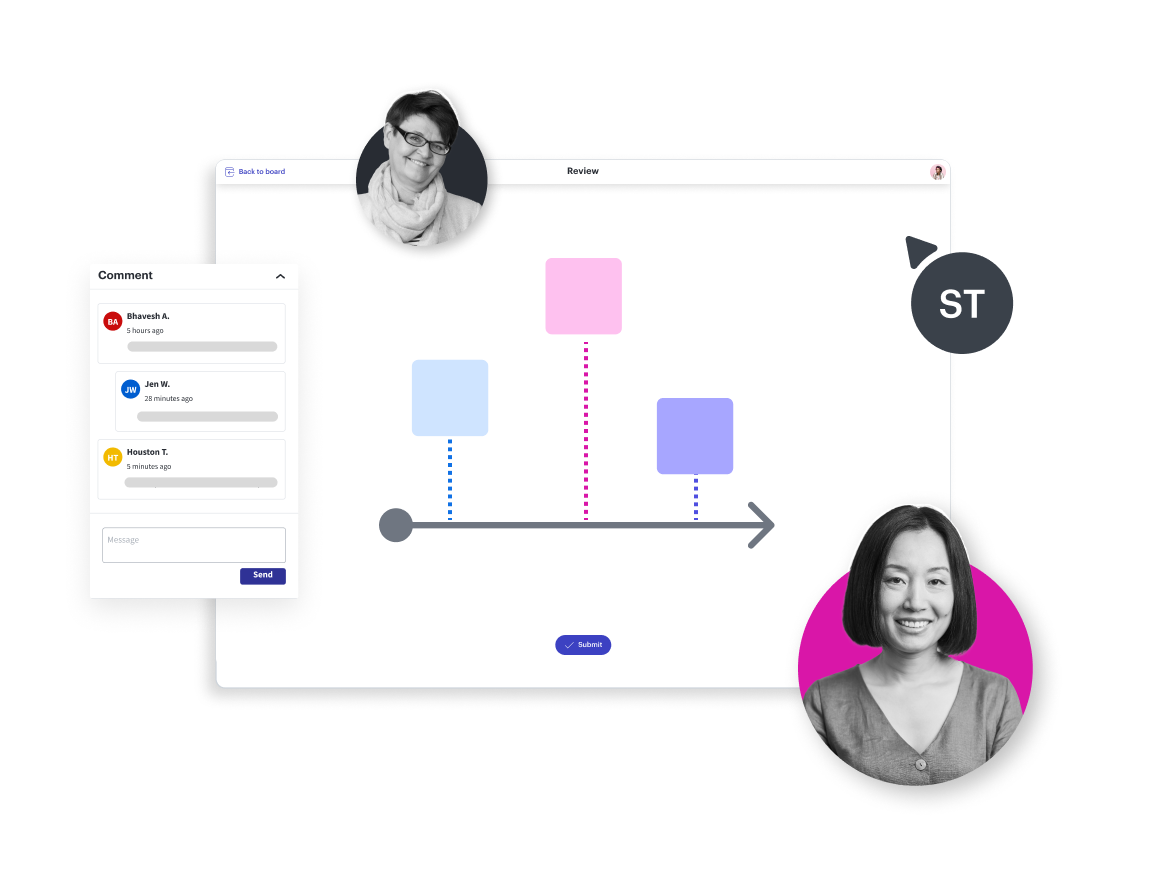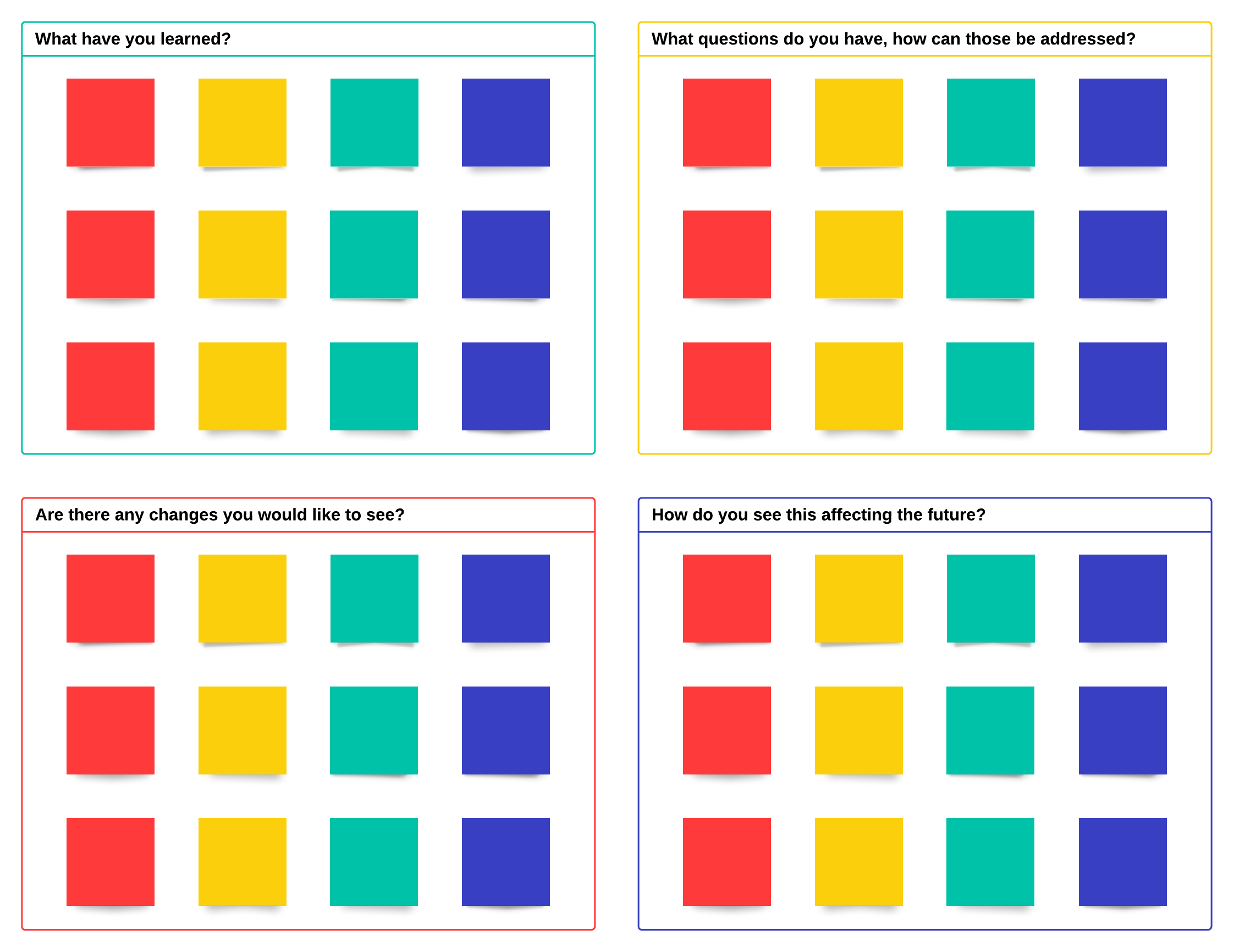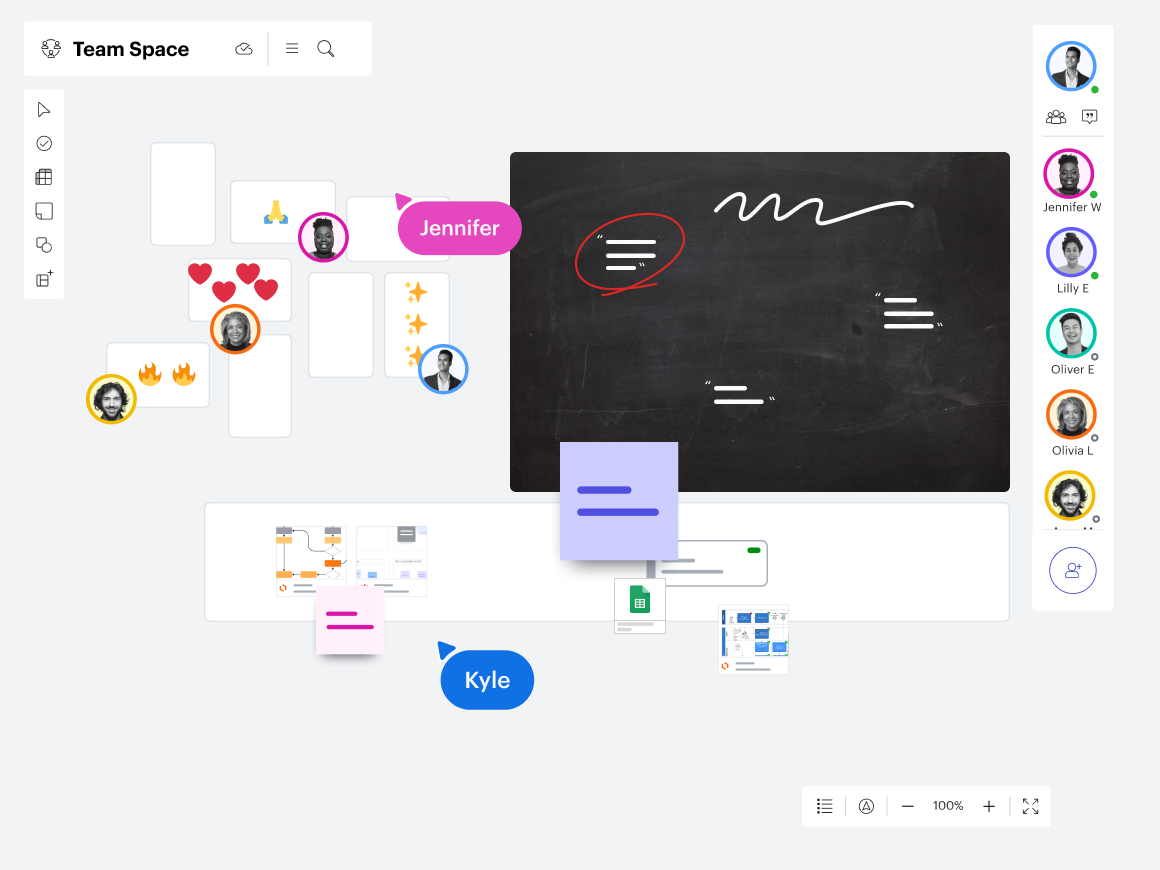
How visual collaboration helps you connect in a hybrid work environment
Reading time: about 6 min
Topics:
Employee engagement has hit a divergent path during the pandemic.
On the one hand, some employees feel the pressure of shifting priorities, changes of pace and schedules, and the monotony of working from home. In a recent report with 451 Research, 23% of people felt somewhat disengaged at work and 7% felt very disengaged at work. Others are embracing the freedom of remote work and finding their satisfaction and productivity skyrocket.
As a result, more organizations are embracing hybrid work environments to fit the needs of every employee and the shifting demands of the business. Even before the pandemic, companies were actively looking to address the daily friction of modern work through digital transformation and investing in the right tools to best support their teams.
The pandemic elevated this priority, and as digital transformation continues to accelerate, tools and technologies will continue to play a huge supporting role in empowering engaged and productive hybrid work environments. Through intentional connection and visual collaboration, organizations can help employees stay connected and improve engagement.
How to stay connected in a hybrid work environment
The initial pandemic lockdowns sent most employees remote while workplaces established minimally viable ways of working. Companies soon realized that the quick fixes were not sustainable long term and that many of these fixes even exacerbated existing workplace complaints like too many meetings vs. focused, actionable time to work.
As it became clear that “business-as-usual” might be a thing of the pre-pandemic past, organizations began to look at and invest in strategies and tools to level up and adapt to the new models of working and rethink longer-term workforce technology strategies.
Let’s dive into some actionable ways to stay connected in hybrid work environments.
Foster intentional connection
Let’s face it—sometimes a virtual meeting just can’t replicate or replace a face-to-face conversation. From outside distractions to weeks on end of working in the same corner home office to the well-documented Zoom fatigue, some employees feel more disconnected than ever from their workplaces and coworkers. This disconnection can also negatively impact engagement and productivity.
Visual collaboration solutions are uniquely suited to help you unite your hybrid or remote teams. According to Constellation Research’s report, “The Leading Trends in Visual Collaboration for 2024”:
“[Visual collaboration] platforms are integrating features designed to level the playing field and ensure that all participants, regardless of location, have an equal voice and presence in collaborative sessions.”
Here are a few ways to foster intentional connection among your dispersed teams.
Team lunches
Your team doesn’t need to be in the same physical location to grab a bite to eat together. Either weekly, bi-weekly, or monthly (pick a cadence that works for you), drop a lunch meeting on your team’s calendar. This scheduled lunch should be purely social—no meeting agenda or workplace chatter. Those working at the office can meet in a conference room and remote employees can dial in to connect with their in-office coworkers.

Team building activities
While some of us grew weary of virtual team-building activities in the dog days of lockdown, it’s still important to create opportunities to maintain a sense of community and culture. Think beyond the standard happy hour. Is there a unique experience or class your team could participate in virtually? Perhaps you can allow individual team members to showcase a unique skill or hobby outside of their day-to-day job.
Closing and ending meetings with a connection
Wait! Before you press the end meeting button, give your teams an opportunity to close the meeting with a quick connection activity. Whether it’s highlighting the smart contributions of one team member during the meeting or doing something as silly as a team chant or cheer, taking a moment to close the meeting on a friendly note will go a long way in making your teams feel appreciated and valued.


Decide on group vs. individual work times and places
With global teams, sometimes it can be hard to feel connected with your peers on the other side of the world. Of course, it’s important to stay flexible with work schedules and maintain work-life balance as you continue to adapt to new ways of working. But if possible, consider establishing an hour or two during the day where everyone in your organization is online and available to connect with other teammates.
Alternatively, think about creating “co-working” spaces or hours during specified times. Those who thrive on working alongside other people can join these co-working areas either in-person or virtually.
If shared work hours aren’t a feasible option, consider creating a digital location where people can see what other team members worked on during the day, get status updates, and visualize a roadmap of upcoming priorities and projects. A digital whiteboard or dashboard is a good option for this—allow your teams to share notes, collaborate on each other’s work and ideas, and even reserve some spaces for digital water cooler chatter.
Invest in visual collaboration solutions
Visual collaboration is a great way to forge connections in hybrid work environments. However, according to research from a recent webinar with 451 Research, workplace collaboration tools fail on two fronts: connection to colleagues and customization. Employees report not feeling as connected with their teams and company culture and struggling to stay aligned on shared goals.
Collaborative tools bridge some of this connection gap, but, ironically, employees also report finding it increasingly challenging to create a consistent and customizable experience across disparate tools that jive with their workflows. Maybe that’s why just over 50% of employees report feeling very productive day-to-day. Connection and customization will need to become a more significant driver of engagement and productivity in the future.
Visual collaboration solutions that facilitate feedback and collaboration between design teams and non-design-centric stakeholders quickly become the focus of this technology discussion. Comprehensive platforms, like the Lucid Visual Collaboration Suite, can power every stage of a project workflow—from ideation to planning, designing, building, and monitoring. By combining Lucidchart's intelligent diagramming with Lucidspark's virtual whiteboarding, the Lucid Suite helps all teams across the business collaborate and align, without disruption or delay.
Case in point: The Russell Group conducts regular workshops to align around new strategies and production plans. Before COVID, the Russell Group conducted these workshops face-to-face, but the team needed to quickly pivot to a virtual format to conduct meetings with employees located all over the country.
Using Lucid's visual collaboration features like a sandbox, sticky notes, emojis, and other templates, the Russell Group team seamlessly adopted a virtual format and kept collaboration moving.
“Immediately after using Lucidspark for the first time, I really liked it. Right now, everyone is on Microsoft Teams or Zoom, and you get loads of people all talking without something visual to focus on. A PowerPoint presentation doesn’t work,” said Russell marketing executive Manvir Basi. “But something like Lucidspark is really good for a team session so you can get people focused on ideas and actually generate an output.”

Embracing visual collaboration in the Next Normal
The last 18 months have proved a massive challenge for even the most collaborative and technologically savvy organizations. The hybrid work environment presents new and evolving challenges that test organizational values and priorities, from maintaining productivity to fostering ongoing workplace relationships.
A visual collaboration solution like Lucid makes it easy to stay collaborative as a team and helps everyone stay connected and engaged with the work that’s happening.

Learn how to evaluate visual collaboration solutions and pick the best for your hybrid team.
Get the buyer's guideAbout Lucid
Lucid Software is the leader in visual collaboration and work acceleration, helping teams see and build the future by turning ideas into reality. Its products include the Lucid Visual Collaboration Suite (Lucidchart and Lucidspark) and airfocus. The Lucid Visual Collaboration Suite, combined with powerful accelerators for business agility, cloud, and process transformation, empowers organizations to streamline work, foster alignment, and drive business transformation at scale. airfocus, an AI-powered product management and roadmapping platform, extends these capabilities by helping teams prioritize work, define product strategy, and align execution with business goals. The most used work acceleration platform by the Fortune 500, Lucid's solutions are trusted by more than 100 million users across enterprises worldwide, including Google, GE, and NBC Universal. Lucid partners with leaders such as Google, Atlassian, and Microsoft, and has received numerous awards for its products, growth, and workplace culture.
Related articles
Empower teams to work in new ways with visual collaboration
Let's explore how visual collaboration is empowering people to work in new and more productive ways and how you can begin to implement this practice on your own team.
10 business use cases made better with visual collaboration
Visual collaboration can help every team move faster. Check out these top 10 ways organizations are using visual collaboration to improve how they work.
10+ features to use in Lucidspark for maximum collaboration
Explore our powerful features that boost your team collaboration.
Why visual collaboration is essential to the digital workplace framework
Discover how visual collaboration, a key part of the Gartner® Digital Workplace Framework, helps teams work more efficiently.